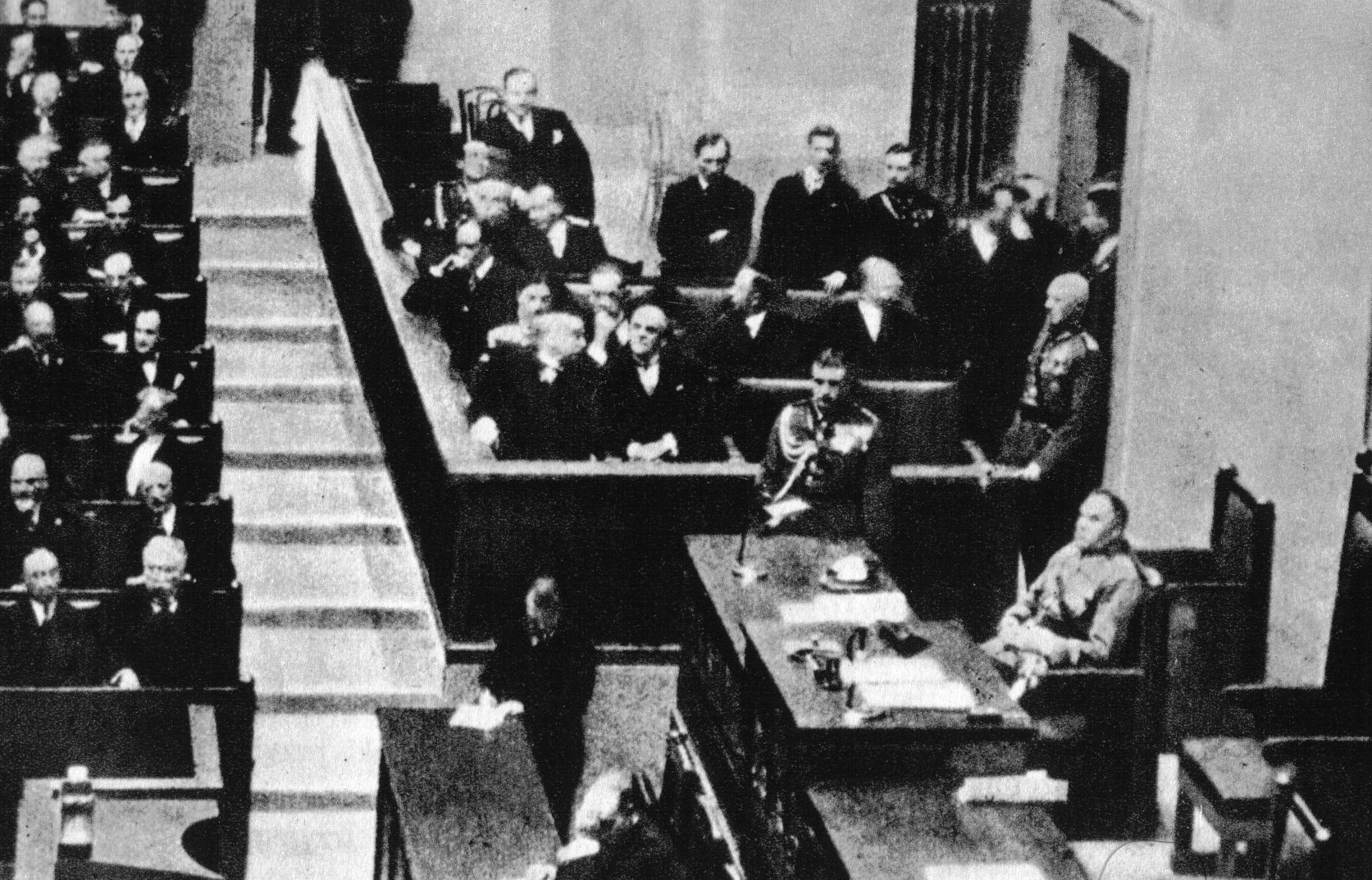History of Inflation in Poland Part VIII: Approaching War.

The situation in Poland during the interwar period was not very good. Ultimately, parliamentary rule came to an end with the May Coup in 1926. Józef Piłsudski and his associates took over power.
However, the change in leadership did not immediately make the problems disappear. To rescue the economy, it became necessary to obtain loans from abroad. In exchange for a loan of 62 million dollars and 2 million pounds, Wall Street sent its experts to Poland. The loans were provided by B.A. Tompkins and Bankers Trust, and the mentioned experts were Edwin Kemmerer and later Charles Dewey. The condition for assistance was to balance the budget and maintain at least 40% backing of banknotes in gold or hard currencies. The złoty was also devalued.
The Great Depression
The problems did not end there. This time, they were not solely the fault of the authorities. The world was engulfed in a massive crisis that originated on Wall Street. Its effects also affected Poland. Over 50% of the country’s foreign exchange reserves flowed out of Poland. In 1934, the government even prohibited transactions in currencies other than the Polish currency.
Foreign trade was tightly controlled as every import and export of gold was subject to scrutiny. In 1933, Poland joined a bloc of countries that defended the convertibility of their currency into gold, but three years later, it ceased to adhere to this principle.
In the 1930s, the so-called Four-Year Plan of Treasury Minister Eugeniusz Kwiatkowski was implemented. Within its framework, Gdynia was built, and the Central Industrial District was established. However, all of this came at the cost of gaining full control over the currency. Spectacular investments were made through the printing of money, thereby contributing to inflation.
On the Brink of War
The outbreak of World War II was also approaching rapidly. In March 1938, Adolf Hitler facilitated the annexation of Austria into his Reich. This caused a banking panic in Poland. Poles began to withdraw their funds from banks en masse, which nearly led to the collapse of several banks. The situation repeated itself when Nazi Germany annexed Czechoslovakia. This time, Polish citizens withdrew as much as 400 million złoty from banks.
The rulers knew that war was approaching. Therefore, they decided to finance the expansion of the army by printing money. In August 1939, there were as many as 3.5 billion złoty in circulation, compared to only 2 billion złoty a year earlier. Controversially, the war actually prevented another hyperinflation in our country.
War
Immediately after the outbreak of armed conflict on September 2, 1939, the Sejm (Polish parliament) passed special credits for the government. A quick decision was also made to export gold from Poland abroad. After many twists and turns, the reserves ended up in France. However, if anyone hoped that they would remain safe there until the end of the war, they were mistaken…



![How Bitcoin Becomes a Lifeline for Victims of Repression and Financial Exclusion – Explains Lyudmyla Kozlovska [INTERVIEW]](https://webeconomy.info/wp-content/uploads/2023/10/Ludmila-Kozlowska-1000x500.jpg)


